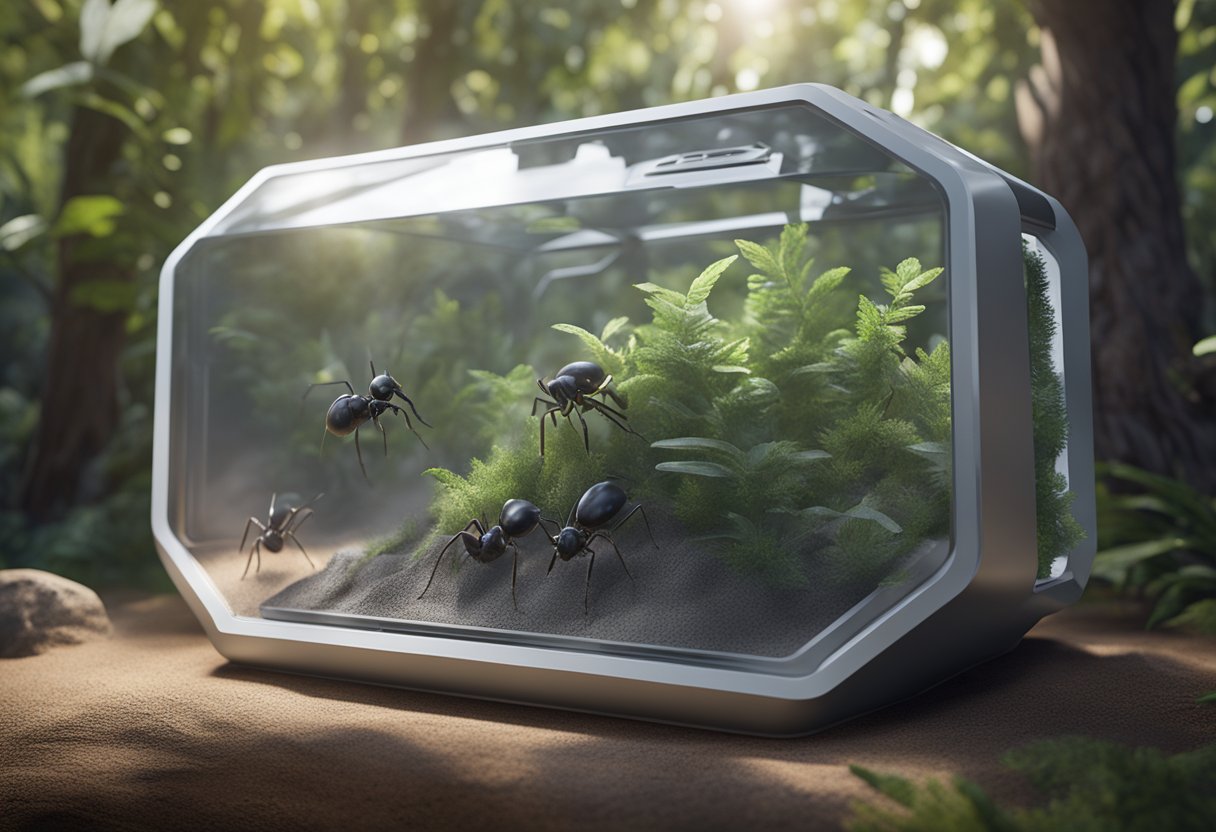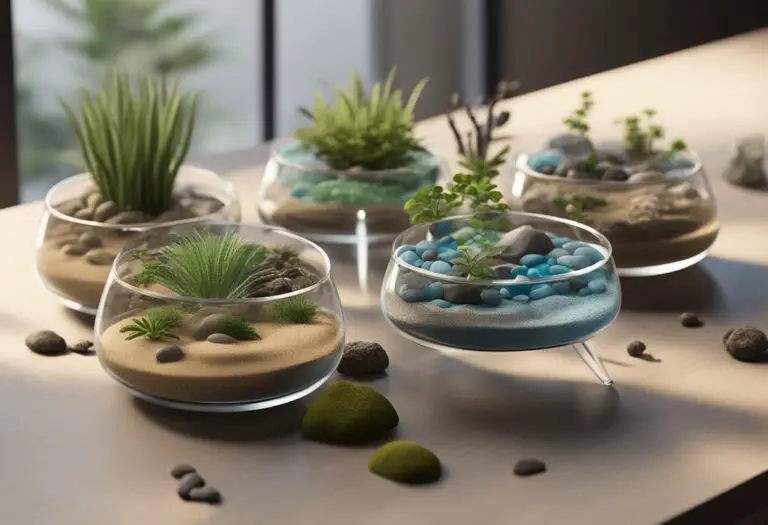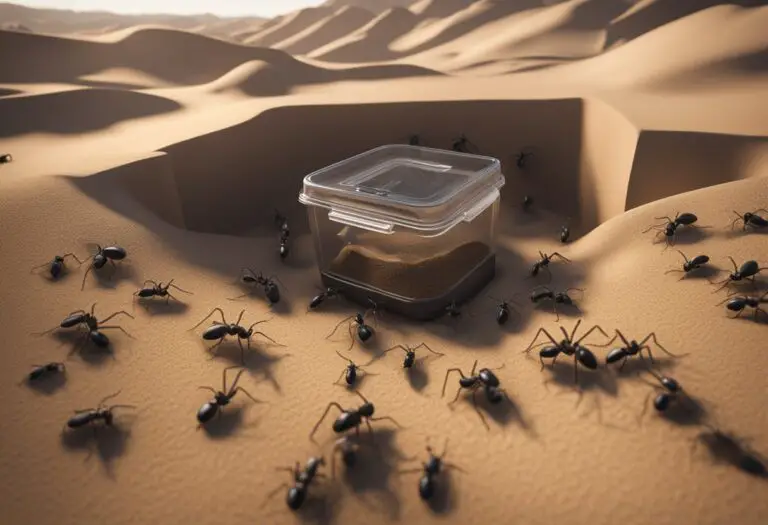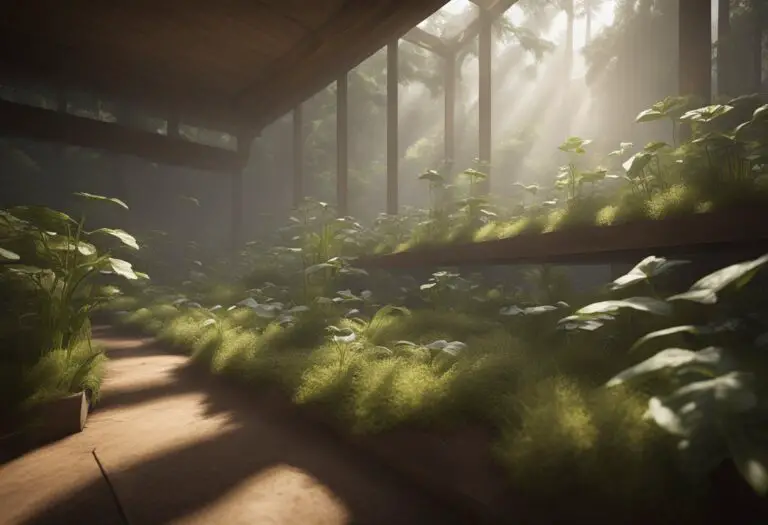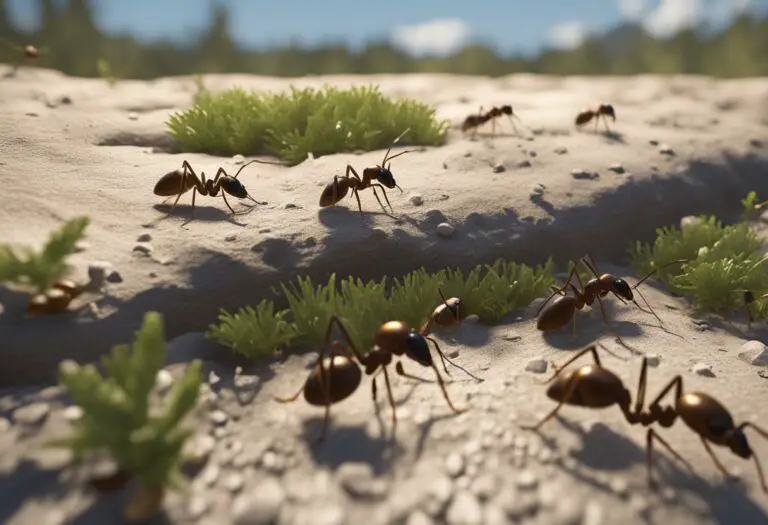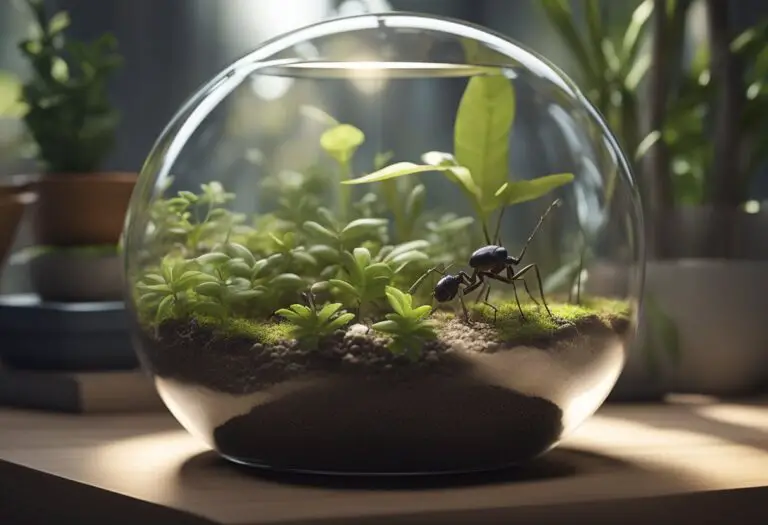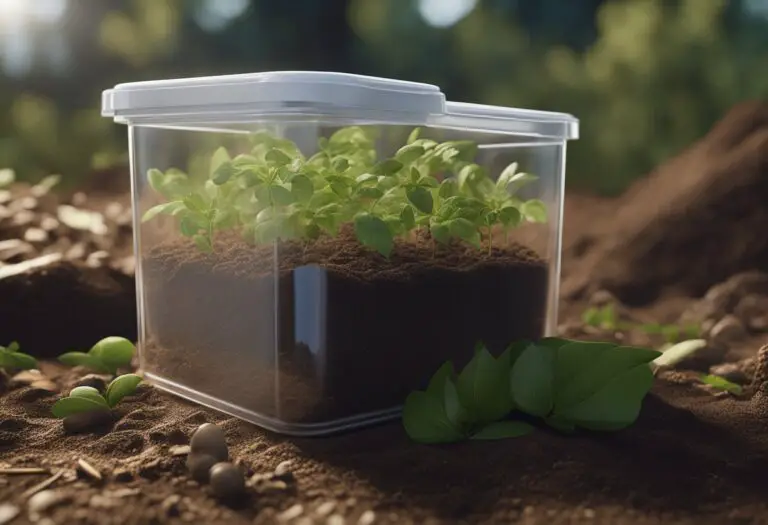How to Properly Ventilate Your Ant Habitat?
Providing proper ventilation in an ant habitat is essential for the health and well-being of the ants. Without proper ventilation, the humidity and carbon dioxide levels can become too high, leading to respiratory problems and even death. In addition, poor ventilation can lead to the growth of harmful bacteria and mold, which can also harm the ants.
One way to provide proper ventilation in an ant habitat is to use a ventilated lid. These lids typically have small holes or mesh screens that allow for air exchange while also preventing ants from escaping. It’s important to make sure that the holes or screens are not too large, as this can allow predators or other insects to enter the habitat.
Another option is to use a fan or air pump to circulate air in the habitat. This can be especially useful for larger habitats or those with many ants. However, it’s important to monitor the temperature and humidity levels to ensure that they remain within a safe range for the ants. Overall, providing proper ventilation is a crucial aspect of ant care that should not be overlooked.
Understanding Ant Habitat Requirements

To provide proper ventilation in an ant habitat, it is important to understand the basic requirements of an ant’s habitat. Ants require a well-ventilated habitat to ensure proper air circulation and to prevent the buildup of moisture. A poorly ventilated habitat can lead to the growth of harmful bacteria and fungi, which can be detrimental to the health of the ants.
One of the most important factors to consider when providing proper ventilation is the size of the ant habitat. The size of the habitat should be proportional to the number of ants living in it. A small habitat can quickly become overcrowded, leading to poor air circulation and increased moisture levels.
Another important factor to consider is the type of material used to construct the habitat. Natural materials such as wood, soil, and sand provide better ventilation than synthetic materials such as plastic. This is because natural materials are porous and allow air to flow through them more easily.
In addition to the size and material of the habitat, it is also important to consider the placement of ventilation openings. Ventilation openings should be placed strategically to ensure that air flows through the habitat evenly. Placing ventilation openings at the top and bottom of the habitat can help to create a natural airflow.
Overall, providing proper ventilation in an ant habitat is essential for the health and well-being of the ants. By understanding the basic requirements of an ant’s habitat and taking the necessary steps to provide proper ventilation, you can create a safe and healthy environment for your ants to thrive in.
Designing the Ventilation System

Providing proper ventilation in an ant habitat is crucial to ensure the health and well-being of the ants. Designing a ventilation system involves choosing the right materials, determining airflow direction, and creating ventilation openings.
Choosing the Right Materials
When designing a ventilation system, it is important to choose materials that are safe for the ants and allow for proper airflow. Materials such as mesh or screen are commonly used for ventilation openings because they are lightweight and allow for air to pass through easily. It is important to choose a material with small enough holes to prevent ants from escaping while still allowing for adequate airflow.
Determining Airflow Direction
Proper airflow direction is important to ensure that fresh air is circulating throughout the habitat. The ventilation openings should be strategically placed to allow for air to enter one side of the habitat and exit the other side. This creates a natural flow of air and prevents stagnant pockets of air from forming.
Creating Ventilation Openings
When creating ventilation openings, it is important to ensure that they are the correct size and number for the size of the habitat and number of ants. Too few ventilation openings can lead to poor air circulation, while too many can make it difficult to maintain proper humidity levels. It is recommended to have at least two ventilation openings on opposite sides of the habitat.
In summary, designing a proper ventilation system for an ant habitat involves choosing safe materials, determining airflow direction, and creating ventilation openings of the correct size and number. By following these guidelines, the ants can thrive in a healthy and comfortable environment.
Maintaining Proper Humidity Levels

Humidity is an important factor to consider when providing proper ventilation in an ant habitat. Ants require a specific range of humidity levels to thrive, and it is the responsibility of the ant keeper to maintain these levels.
To maintain proper humidity levels, the ant keeper can follow these tips:
- Use a hygrometer to measure humidity levels regularly. The ideal humidity range for most ant species is between 50-70%.
- Avoid placing the ant habitat in direct sunlight or near heat sources, as this can cause the humidity levels to drop.
- Provide a water source for the ants, such as a test tube or water dispenser. This will help to maintain humidity levels and provide the ants with a source of hydration.
- Use a substrate that can hold moisture, such as sand or soil. This will help to regulate humidity levels and prevent the habitat from drying out.
- Mist the habitat with water as needed to maintain proper humidity levels. However, be careful not to over-mist as this can lead to mold growth and other issues.
By following these tips, the ant keeper can ensure that their ants are living in a habitat with proper humidity levels, which will help them to thrive and grow.
Monitoring and Adjusting Ventilation

Observing Ant Behavior
One of the most effective ways to determine if your ant habitat is properly ventilated is by observing the behavior of the ants. If the ants seem to be sluggish or inactive, it may be a sign that the air quality is poor. Additionally, if the ants are congregating near the ventilation holes, it may be an indication that they are seeking more fresh air.
Making Incremental Changes
It is important to make incremental changes to the ventilation in an ant habitat rather than making drastic changes all at once. This allows you to monitor the effects of each change and adjust accordingly.
One way to make incremental changes is by using a small piece of tape to partially cover one or more of the ventilation holes. After a few days, observe the behavior of the ants and make note of any changes. If the ants seem more active and healthy, the ventilation may have been improved. If there is no change or the ants seem worse off, remove the tape and try a different approach.
Another approach is to gradually increase the size of the ventilation holes. This can be done by using a drill or other tool to create slightly larger openings. Again, observe the behavior of the ants and make note of any changes before making further adjustments.
By monitoring the behavior of the ants and making incremental changes to the ventilation, you can ensure that your ant habitat provides a healthy and comfortable environment for your ants to thrive.
Common Ventilation Challenges and Solutions

Preventing Mold Growth
One of the most common challenges in providing proper ventilation in an ant habitat is preventing mold growth. Mold can grow quickly in warm and humid environments, which are ideal conditions for ants. To prevent mold growth, it is important to ensure proper air circulation in the habitat. This can be achieved by placing ventilation holes on the sides or top of the habitat. Additionally, using a substrate that allows for proper drainage and ventilation, such as sand or a mixture of sand and soil, can also help prevent mold growth.
Dealing with Obstructions
Another common challenge in providing proper ventilation is dealing with obstructions. Ants can often create tunnels or blockages that can obstruct the flow of air through the habitat. To address this issue, it is important to regularly check the habitat for any obstructions and clear them out as needed. Additionally, placing ventilation holes in strategic locations can help ensure that air is able to flow freely through the habitat.
Addressing Over-Ventilation
While proper ventilation is important, it is also possible to over-ventilate an ant habitat. Over-ventilation can lead to a habitat that is too dry, which can be harmful to ants. To address this issue, it is important to monitor the humidity levels in the habitat and adjust ventilation as needed. This can be achieved by using a hygrometer to measure humidity levels and adjusting ventilation holes accordingly. Additionally, adding a water source, such as a moist sponge or water tube, can help maintain proper humidity levels in the habitat.
Advanced Ventilation Techniques

Automated Climate Control
For those who want to take ant habitat ventilation to the next level, automated climate control systems can be a great option. These systems use sensors to monitor temperature and humidity levels within the habitat and adjust ventilation accordingly.
Automated climate control systems can be particularly useful for those who live in areas with extreme weather conditions or for those who have a large ant colony that requires precise environmental conditions. These systems can be expensive, but they can also provide peace of mind and ensure the health and well-being of the ant colony.
Incorporating Natural Elements
Another advanced ventilation technique is to incorporate natural elements into the ant habitat. This can include adding live plants or a small water feature. Plants can help regulate humidity levels and provide oxygen, while a water feature can help maintain moisture levels and provide a source of hydration for the ants.
When incorporating natural elements, it’s important to research the specific needs of the ant species in question. Some ants may prefer a drier environment, while others may require high humidity levels. Additionally, it’s important to ensure that any plants or water features are safe for the ants and won’t introduce harmful chemicals or bacteria into the habitat.
Overall, advanced ventilation techniques can provide a variety of benefits for ant keepers who are looking to create the optimal environment for their ant colony. Whether it’s through automated climate control or incorporating natural elements, these techniques can help ensure the health and well-being of the ants and provide a fascinating glimpse into the world of these fascinating insects.
Legal and Ethical Considerations

When providing proper ventilation in an ant habitat, it is important to consider both legal and ethical considerations. In some countries, it may be illegal to keep certain species of ants as pets or to transport them across state or international borders. It is important to research the laws and regulations in your area before purchasing or transporting ants.
Additionally, it is important to consider the ethical implications of keeping ants in captivity. Ants are social creatures that rely on their colony for survival, and removing them from their natural habitat can disrupt their social structure and cause stress. It is important to provide a suitable environment that mimics their natural habitat as closely as possible, including proper ventilation, temperature, and humidity.
It is also important to ensure that the ants are provided with adequate food and water, and that their habitat is cleaned regularly to prevent the buildup of waste and bacteria. Failure to provide proper care can lead to illness and death of the ants.
Overall, it is important to approach ant keeping with a responsible and ethical mindset, and to prioritize the well-being of the ants above all else. By following legal and ethical guidelines, ant keepers can provide a safe and healthy environment for their colony to thrive.

